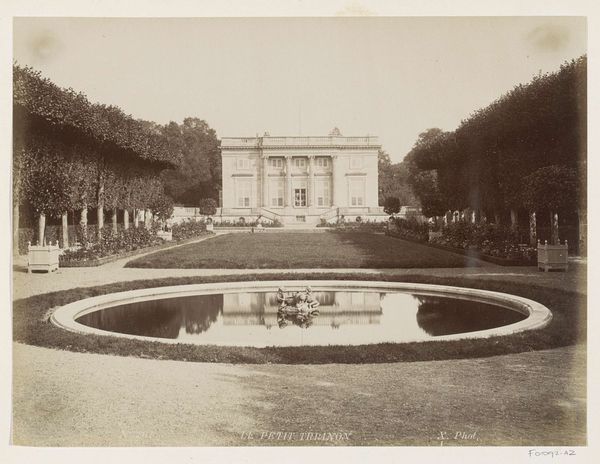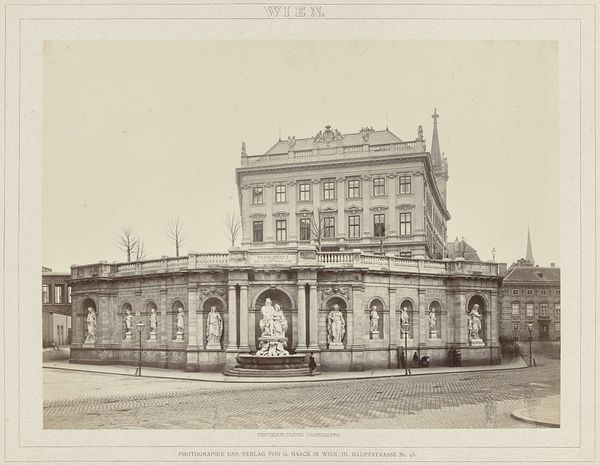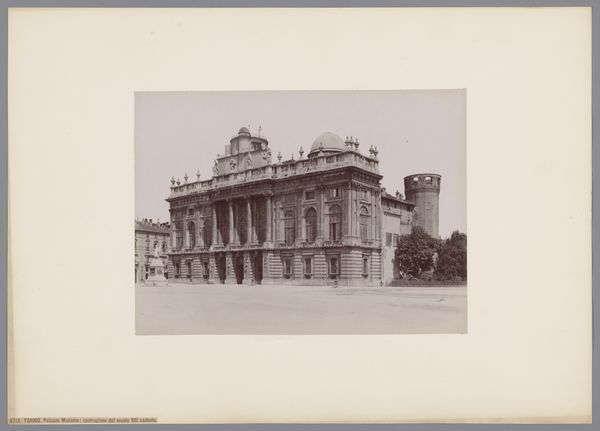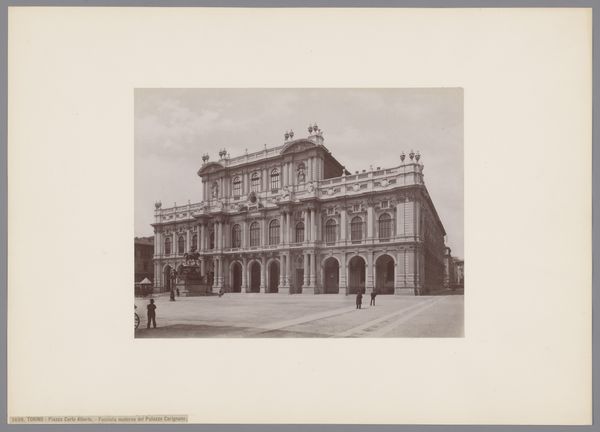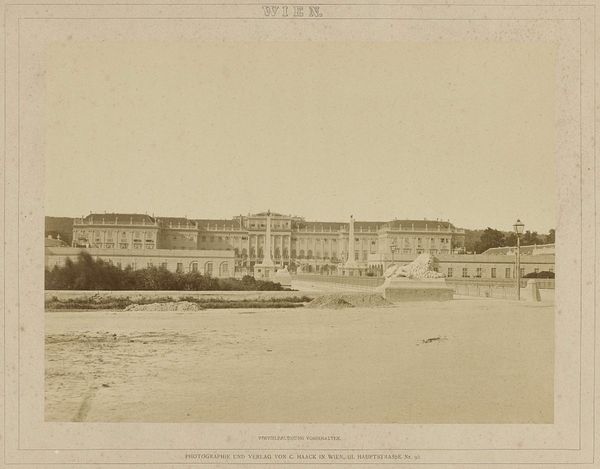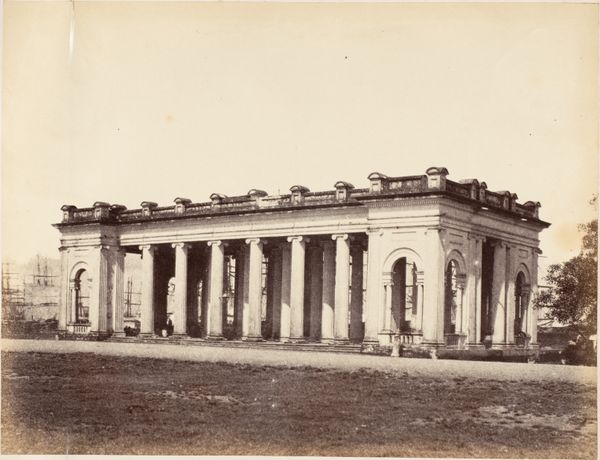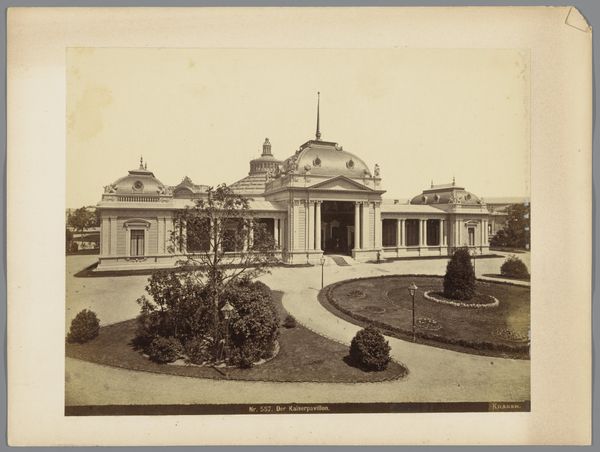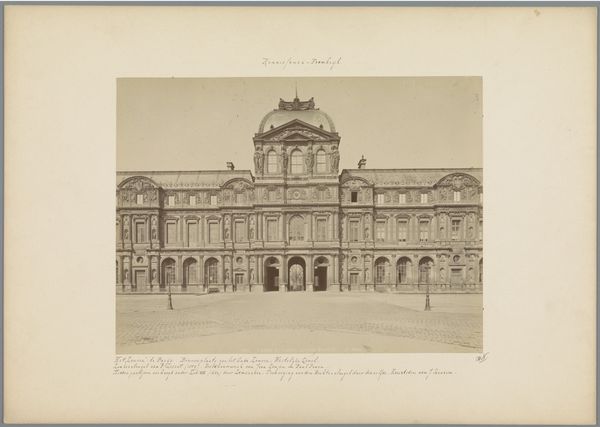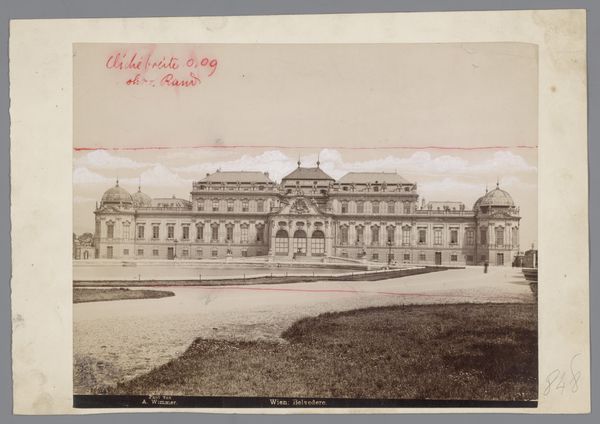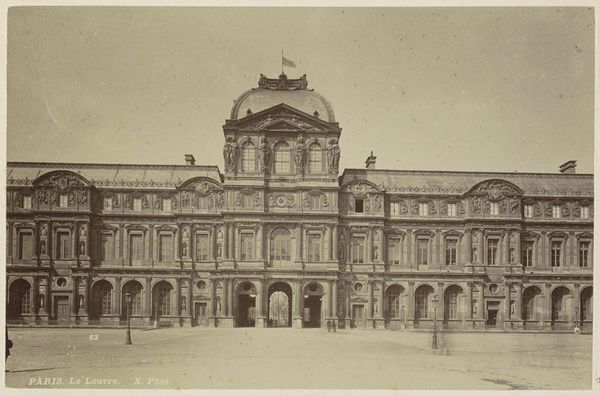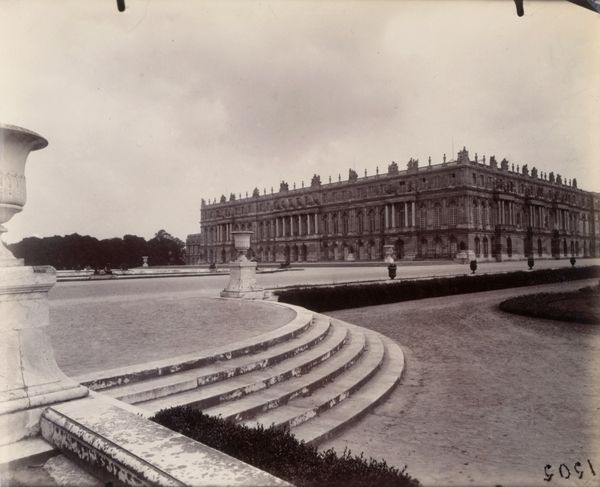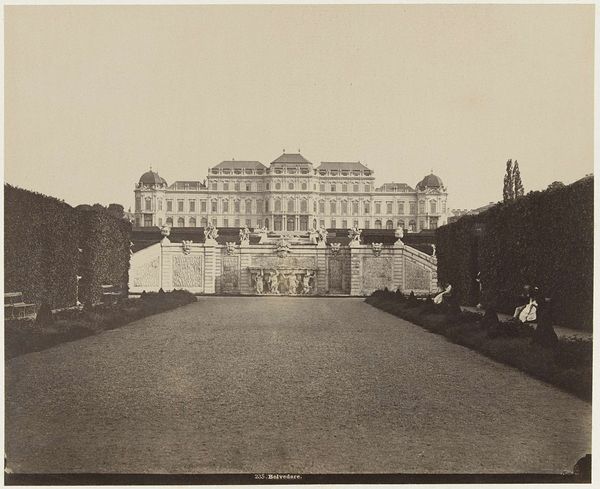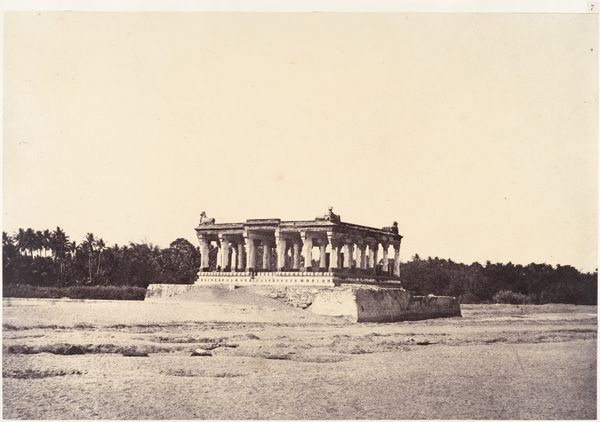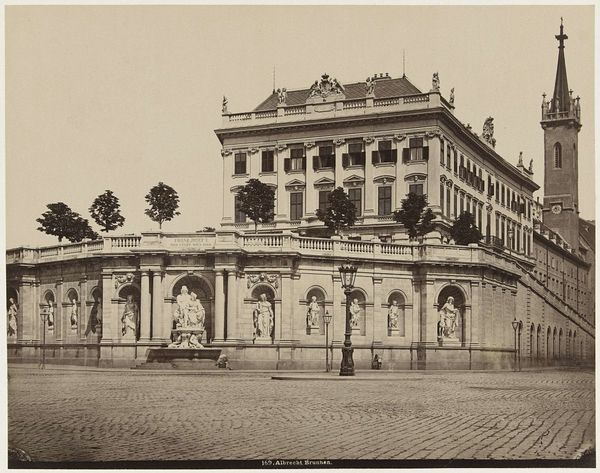
Gezicht op de Gloriette in de tuin van paleis Schönbrunn in Wenen, Oostenrijk 1880 - 1900
0:00
0:00
print, photography, architecture
# print
#
landscape
#
photography
#
historical photography
#
orientalism
#
cityscape
#
architecture
#
realism
#
statue
Dimensions: height 328 mm, width 420 mm
Copyright: Rijks Museum: Open Domain
Editor: This is a photograph taken sometime between 1880 and 1900 by Carl Haack; it's called "Gezicht op de Gloriette in de tuin van paleis Schönbrunn in Wenen, Oostenrijk." It presents a regal architectural structure reflected in a still body of water. It’s quite formal and seems to exude power and control. What do you see when you look at this piece? Curator: The image speaks volumes about the Austro-Hungarian empire, doesn't it? It's more than just a landscape. Consider the Gloriette itself. It was constructed to legitimize Habsburg rule by visually linking the dynasty to Roman imperial power through its architectural references. Now, reflect on who this photograph would have been circulated amongst. Editor: So, it wasn't necessarily about personal artistic expression but about reinforcing political power. Curator: Exactly. Photography at this time was rapidly democratizing image-making, but the subjects, particularly architecture and landscapes, still communicated very specific messages about ownership, national identity, and the ‘civilizing mission’ of empires. The photograph is sepia-toned, romanticized...What does that suggest about the view being presented? Editor: Perhaps that it's intentionally excluding other realities of the time? Like any social unrest or poverty. It's a very curated view of Austrian power, made even more powerful by photography itself, due to photography’s presumed objectivity. Curator: Precisely. And notice the position of the viewer—at a distance, looking up. The photographer strategically positions us within the social hierarchy, reinforcing this structure of power. It's vital to dissect how these images were instruments in constructing a narrative that justified social and political orders. Editor: It’s eye-opening to consider photography, something I often see as capturing truth, as actually contributing to the construction of a specific, controlled narrative. Thank you. Curator: It challenges us to really question everything, doesn’t it? Considering how deeply intertwined art is with historical and social contexts gives us a deeper, more critical understanding of power dynamics at play.
Comments
No comments
Be the first to comment and join the conversation on the ultimate creative platform.
